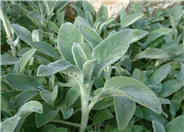
Common name:Lamb's Ear
Botanical name:Stachys byzantina
This tiny shrub will grow less than 1' tall and has medium-size, greyish-green leaves with blue and lavender flowers that bloom in the spring. This shrub is grown more for its velvety leaves than the flowers. It is drought tolerant once it's established. Be careful not to overwater.
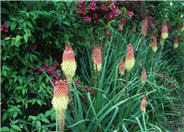
Common name:Red-Hot Poker, Torch Lily
Botanical name:Kniphofia hybrids
This perennial will grow to about 6' tall and has large green leaves and has red, orange, and yellow flowers that bloom in spring, summer, and fall.
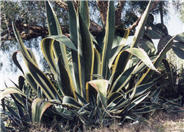
Common name:Yellow Margin Century Plant
Botanical name:Agave americana marginata
Marginata has a creamy yellow margin around the edge of the leaves and will grow 6-10' tall x 13' wide. It is a native to Mexico, and has a very open growth habit with leaves that recurve along their length.
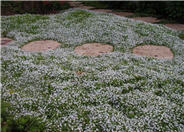
Common name:Blue Star Creeper
Botanical name:Pratia pedunculata
Pratia pedunculata has bright green, nearly stemless, 1/4" leaves. In late spring and summer, tiny, star-shaped pale blue flowers appear on the tightly woven green "mat" of foliage. It prefers rich, well draining soil in full to part shade.
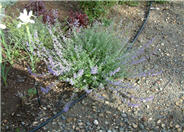
Common name:Catmint
Botanical name:Nepeta X faassenii
Nepeta faassenii makes soft, grey-green, undulating mounds to 1' tall in bloom, spreading 3'-4' wide. The small leaves are attractive to cats. This perennial has lavender blue flowers in summer. Catmint can be planted in sun or shade and needs medium amount of water. Prune spent flowers to encourage more blooms.
| Designer: Mark Lewis | Pavers to Entry |
Photographer: GardenSoft |
Soils and Compost:
Practice grass-cycling by leaving short grass clippings on lawns after mowing, so that nutrients and organic matter are returned to the soil.
Water Saving Tip:
Change spray sprinklers to low-flow bubbler or drip systems. Shrubs and trees are ideal candidates for this type of irrigation because the water is applied directly to the root zones.
Integrated Pest Management:
Remove irrigation water and fertilizer from areas where you don't want weeds to grow.

